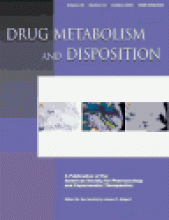Abstract
Reactive intermediates are a continuous burden in biology and several defense mechanisms have evolved. Here we focus on the functions of glutathione transferases (GSTs) with the aim to discuss the quantitative aspects of defense against reactive intermediates. Humans excrete approximately 0.1 mmol of thioether conjugates per day. As the amount of GST active sites in liver is ≈0.5 mmol, it appears that glutathione transferase catalysts are present in tremendous excess. In fact, the known catalytic properties of GSTs reveal that the enzymes can empty the liver glutathione (GSH) pool in a matter of seconds when provided with a suitable substrate. However, based on the urinary output of conjugates (or derivatives thereof), individual GSTs turn over (i.e., catalyze a single reaction) only once every few days. Glutathione transferase overcapacity reflects the fact that there is a linear relation between GST enzyme amount and protection level (provided that GSH is not depleted). Put in a different perspective, a few reactive molecules will always escape conjugation and reach cellular targets. It is therefore not surprising that signaling systems sensing reactive intermediates have evolved resulting in the increase of GSH and GST levels. Precisely for this reason, more moderately reactive electrophiles (Michael acceptors) are receiving growing interest due to their anticarcinogenic properties. Another putative regulatory mechanism involves direct activation of microsomal GST1 by thiol-reactive electrophiles through cysteine 49. The toxicological significance of low levels of reactive intermediates are of interest also in drug development, and here we discuss the use of microsomal GST1 activation as a surrogate detection marker.
Footnotes
- Received April 11, 2002.
- Accepted June 26, 2002.
- The American Society for Pharmacology and Experimental Therapeutics
DMD articles become freely available 12 months after publication, and remain freely available for 5 years.Non-open access articles that fall outside this five year window are available only to institutional subscribers and current ASPET members, or through the article purchase feature at the bottom of the page.
|






